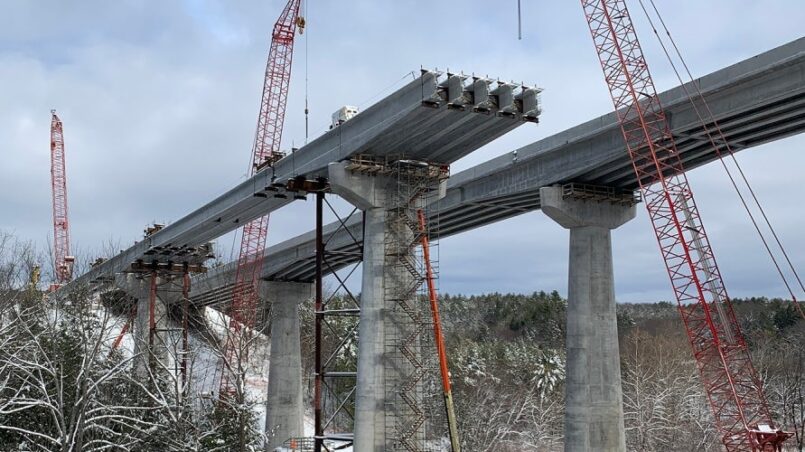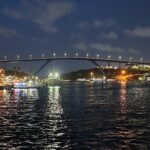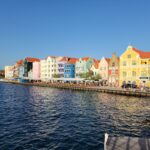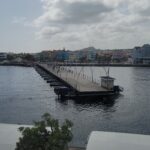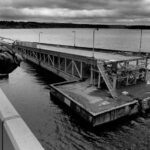In 2003, Peter Gabriel released an album he called Hit – a two disc set of his greatest recordings. Gabriel, who is known for selecting one word, one syllable, usually unrelated names for his albums, was previously the front man for Genesis before leaving the band to pursue a solo career. Solsbury Hill from 1977 is about his struggles with letting go of his Genesis past.
Most of the good Genesis stuff came from the post-Gabriel, Phil Collins era. But anyway – in this case Hit actually fit the bill as a well selected title. Gabriel further labeled each disc – disc one was named Hit since it contained his chart topping successes, whereas disc two was named Miss since it contained his more obscure material.
The year 2021 marks 15 years for me working in the bridge engineering world. And while I hope there are still some interesting projects out there in front of me, I decided to get a little nostalgic and end the year with a reflection on where I’ve been. So in this 40th edition of The Bridge Guy, I thought I would take the opportunity to toot my own horn for a bit. Here are five of my favorite bridge designs from the last 15 years.
US 395 Parksmith Drive Overcrossing
This bridge is notable for me because it was my first multi-span bridge. The Washington State Department of Transportation has been working to complete the connection of US 395 in Spokane with Interstate 90. The corridor of US 395 is known as the North Spokane Corridor. There have been multiple contracts on the NSC over the years and Parksmith was one of them.
This particular contract was widening most of what had already been built. The existing Parksmith bridge had been built a few years before and my bridge was to be a parallel structure that would carry southbound traffic. Many of the details, such as the oblong columns, the snow fence and formliner finishes had already been decided.
The bridge is not skewed, but the girders splay or flare out wider at one end. Otherwise the bridge is straight. The ground was suitable for spread footings, which simplified the seismic analysis, which is required for bridges that are more than one span.
Besides having to figure out the new displacement based seismic analysis methodology that had recently been adopted by WSDOT, I also got to use SAP2000’s bridge modeler feature for the first time – leading to many ups and a few downs over the years.
The bridge not only crosses Parksmith Drive, but it also crosses a railroad track. This means that certain AREMA checks had to be made on the columns and the bridge needed to maintain a minimum clearance over the tracks.
This was one of the smoothest multi-bridge projects I’ve ever worked on, featuring multiple engineers and detailers all working on bridges along the corridor. As my first multi-span design, I had enough flexibility to figure out the art of continuity reinforcement over the piers, interlocking spirals on the columns and the infinite joy of not having to iterate on springs during the seismic analysis.
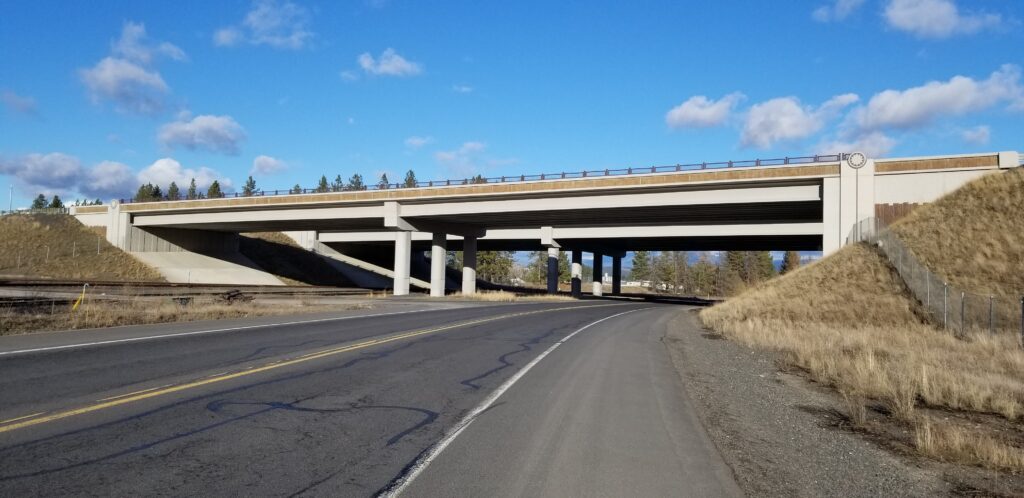
The bridge was completed in 2012 with a minimum of issues. I got to visit the bridge for the first time in 2021.
SR 902 Over Interstate 90 to Medical Lake
My first bridge design after returning to WSDOT. The existing bridge did not have adequate sidewalks and was inadequate for the traffic anticipated as a result of the Amazon facility going in near Medical Lake. Therefore a parallel bridge with a shared use path separated from traffic was to be constructed.
This project sort of got dropped into my lap, as tends to happen a lot. Go figure. I guess I’m one of those guys that just can’t say no?
I ended up doing the preliminary plan for the bridge in addition to the final design. During the preliminary plan phase, we typically take the bridge design to 30% completion. This means all of the geometry is set – channelization, girder type, clearances, all of that is set.
Due to being so close to the existing bridge, spread footings were ruled out in favor of short shafts. Shafts were intentionally held up short instead of being socketed into the rock which was relatively close to the surface in this area. This was intended to expedite the design, however we ended up socketing the tips in the rock at the last minute.
The bridge was straight and was not skewed, but it did have one complication. It was to be the first bridge in Washington to use MMFX or ChromX reinforcement in the deck. ChromX is a corrosion resistant reinforcement that also has a higher yield strength. In the deck we utilized the 4% chromium (mid-grade) bar and the 100 ksi yield strength. What we found was that we could keep rebar spacing the same to satisfy serviceability checks, but drop down a bar size for strength checks. This meant we had a design that was comparable to epoxy coated bars by taking advantage of the high strength.
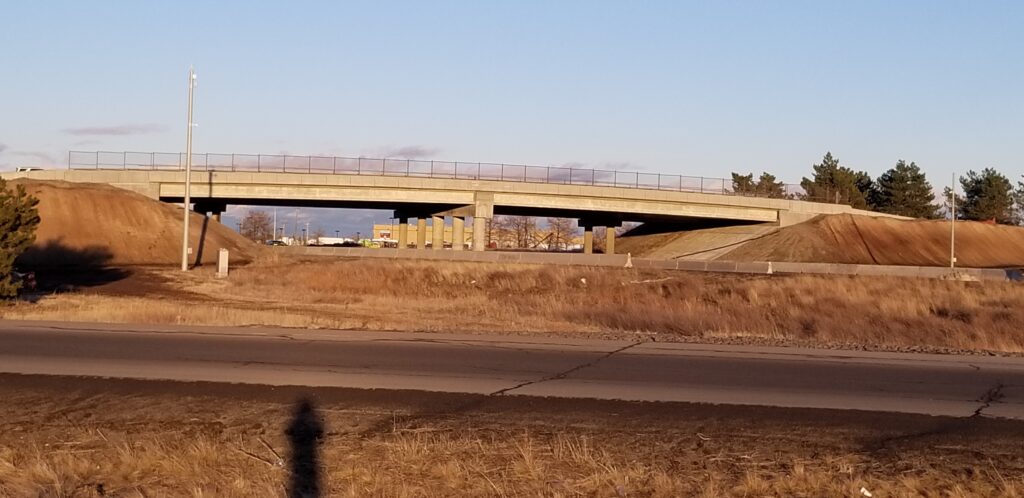
The COVID-19 pandemic briefly halted the work on the bridge, but after some delay it was eventually completed and opened to traffic in 2021.
SR 162 Over the Puyallup River
This is one of the stranger bridge projects that I’ve worked on. I think this poor project dragged on for about four years before it finally became shovel ready. By the time all was said and done, it had been handed off between two supervisors. The original supervisor, detailer and checker all moved on to different positions. By the time it was finally ready to go out the door, I myself was getting ready to leave WSDOT.
The bridge is located across the Puyallup River in the town of McMillin, near Orting. It was intended to replace the existing McMillin Bridge, designed by Homer Hadley in his heyday. Experimental in its own right, the old McMillin bridge was a concrete pony truss. Sidewalks were incorporated inside the trusses on each side. However, the bridge was narrow with no shoulders and it was time for an upgrade.
A rail bridge nearby had been converted to pedestrian and bicycle use, so the old bridge was not needed for that purpose. Originally it had been slated for demolition, and demolition plans had been thought through.
The bridge is an asymmetrical design with uneven span lengths. It features a slight curvature and slight skewing of the piers. The center pier is a hammerhead style design with a single column single shaft foundation. The design pushes the limit of the hammerhead mild reinforcement design due to its width, which is over 40 feet tip to tip.
The foundations were designed for liquefaction and lateral spread, a type of seismically induced land slide. The bridge is so low to the ground that we ended up ‘creating’ a column by installing a silo casing into the ground. This created an annular space in the ground for the column to hide. A steel cover hides this space and it can be opened for inspection purposes.
The bridge is notable in that the girders were the first in Washington to be constructed using lightweight concrete. This involved various discussions with aggregate suppliers such as Reid Castrodale with Carolina Stalite to determine what was possible. This paved the way for record breaking super-girders that pushed the limits on single stick span lengths, made possible by lightweight aggregates.
After the original supervisor left, the bridge was further ‘touched’ by others in the office. Some of these improvements were good, such as improvements to the way the center pier was detailed. Much of that was done without my knowledge since I was working in Seattle at the time.
The project was significantly delayed due to concerns over the historic preservation of the old bridge. A Section 106 process was started which took about 18 months, delaying the project but impacting the design very little. In the end, the old bridge was to remain as a monument.
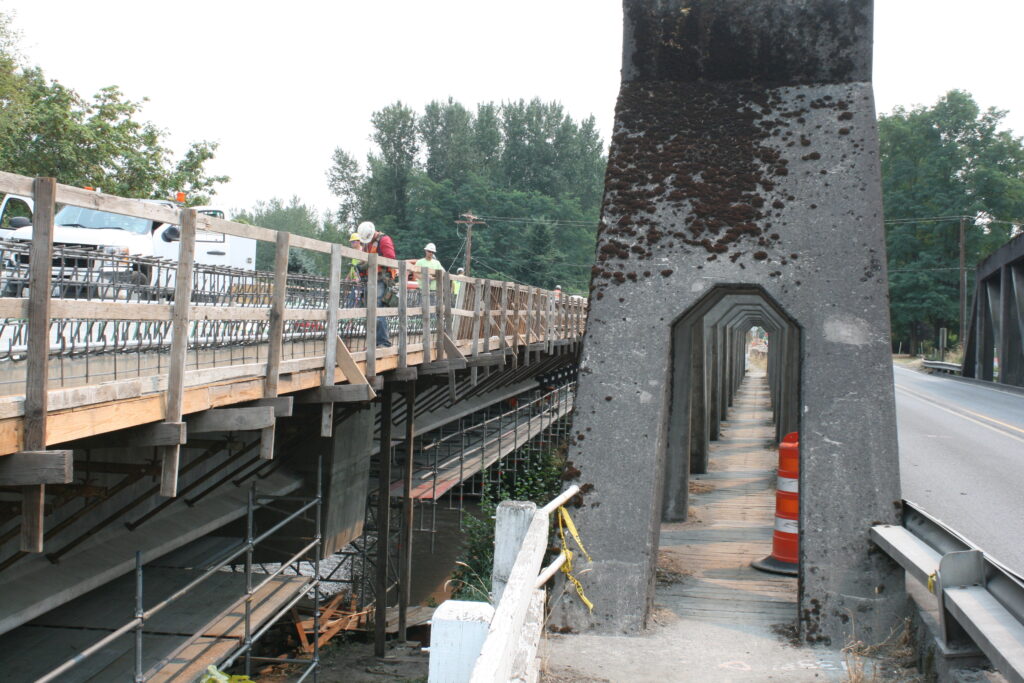
While my name appears on the title block and is my design, due to sheet renumbering and some other minor changes after I had left WSDOT, my stamp is not on the final version. The bridge was opened to traffic in 2015.
Interstate 91 Over the Williams River and Green Mountain Railroad near Rockingham, VT
This project holds the distinction of being the only final design project I worked on at HDR as a designer all the way through to completion. It is also the only Design-Build project that I worked on as a designer, which is an alternative delivery method that awards a project to a designer/contractor team as opposed to designing then awarding the project.
The project would build two parallel bridges to replace the deteriorated steel trusses that carried I-91 in south eastern Vermont. The base technical concept was for a three span balanced cantilever segmental bridge. HDR partnered with Reed & Reed out of Maine to come up with a four span haunched splice girder concept that eventually won our team the project.
I was responsible for the superstructure design. The substructure and civil work was done out of the Boston office by a separate group. It was one of the first final design uses of the new and improved PGSplice software, developed by WSDOT. The new software performed a time dependent analysis and was capable of modeling complex geometry, haunched girders and checking all stages of construction.
I won’t go into the particulars of the design as this was covered in a previous edition of The Bridge Guy. I left HDR as the project was being completed. At the time it was built it held the record for the longest spliced girder bridge in New England. While steel is a more common building material for bridges, a concrete bridge should reduce maintenance costs over the life of the bridge.
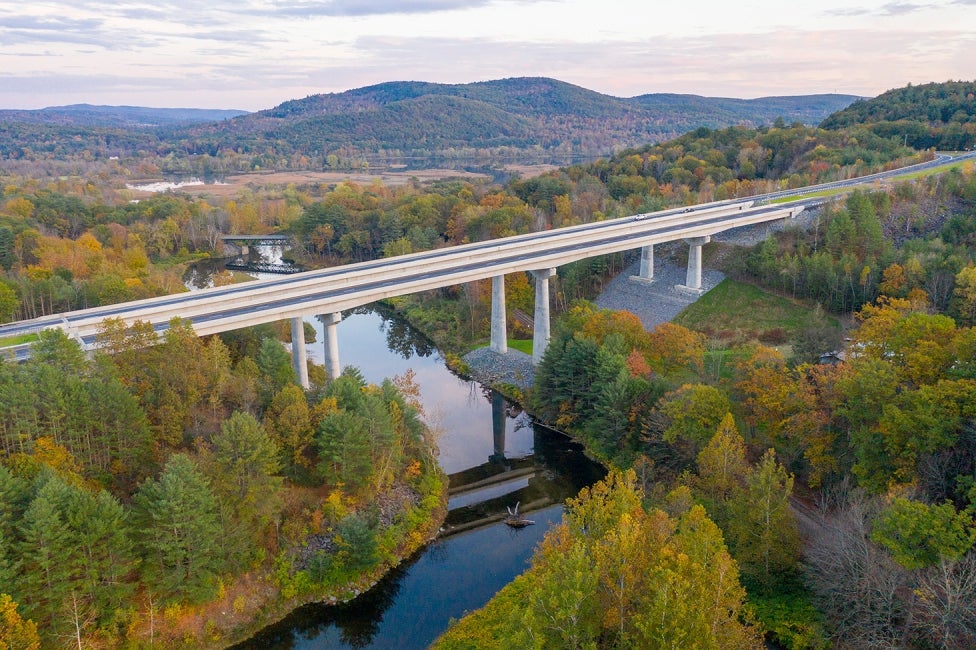
The southbound bridge was completed in 2020.
SR 99 South Atlantic Street Bypass (Little-H)
This complex structure was thoroughly a team effort, with 5-6 engineers working on the design and multiple detailers. It still remains one of the more geometrically complex bridges I’ve ever worked on.
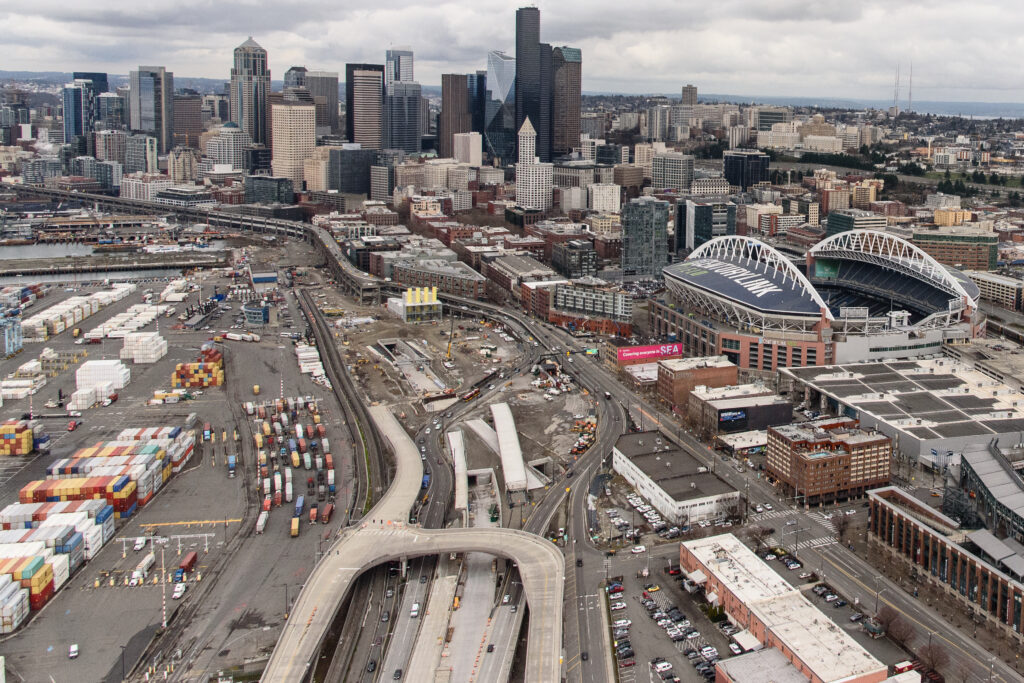
The bridge was originally to been a subway, basically a road that would dive below the existing highway 99 in Seattle. As the Deep Bore Tunnel project took shape, it was decided that an elevated structure would be more economical.
The structure would provide a way for trucks entering and leaving the Port of Seattle to get over the troublesome tail track used to build trains by Burlington Northern Santa Fe railroad. The structure was made up of three legs, two to the south in a horseshoe shape, and another to the north as way to access the Seattle waterfront.
The complicated geometry meant the superstructure had to be no less than 5 feet deep except at piers. With all the curvature, the central two frames were conceived as cast-in-place post-tensioned box girders that were joint at in-span hinges to simplify the framing. The legs of the structure were conceived as spliced tub girders.
The bridge was erected on falsework that was built flat. Geofoam, used extensively in the approaches, was used to form the soffit if the bottom slab, cross slopes and other complex geometry.
It was my first time designing with post-tensioning. I had to get creative with certain details, and learned a lot along the way. We adapted the anchorages to provide 5 feet of tangent to reduce the likelihood of a tendon blow out where stresses were high. Extreme curvature and thinner webs meant that web reinforcement was extremely tight. In the tightest radii area, out of plane bending due to post-tensioning actually cracked the web – you could actually see the hairline crack that followed the center of the post-tensioning tendon. It is so neat when structures behave as you predict.
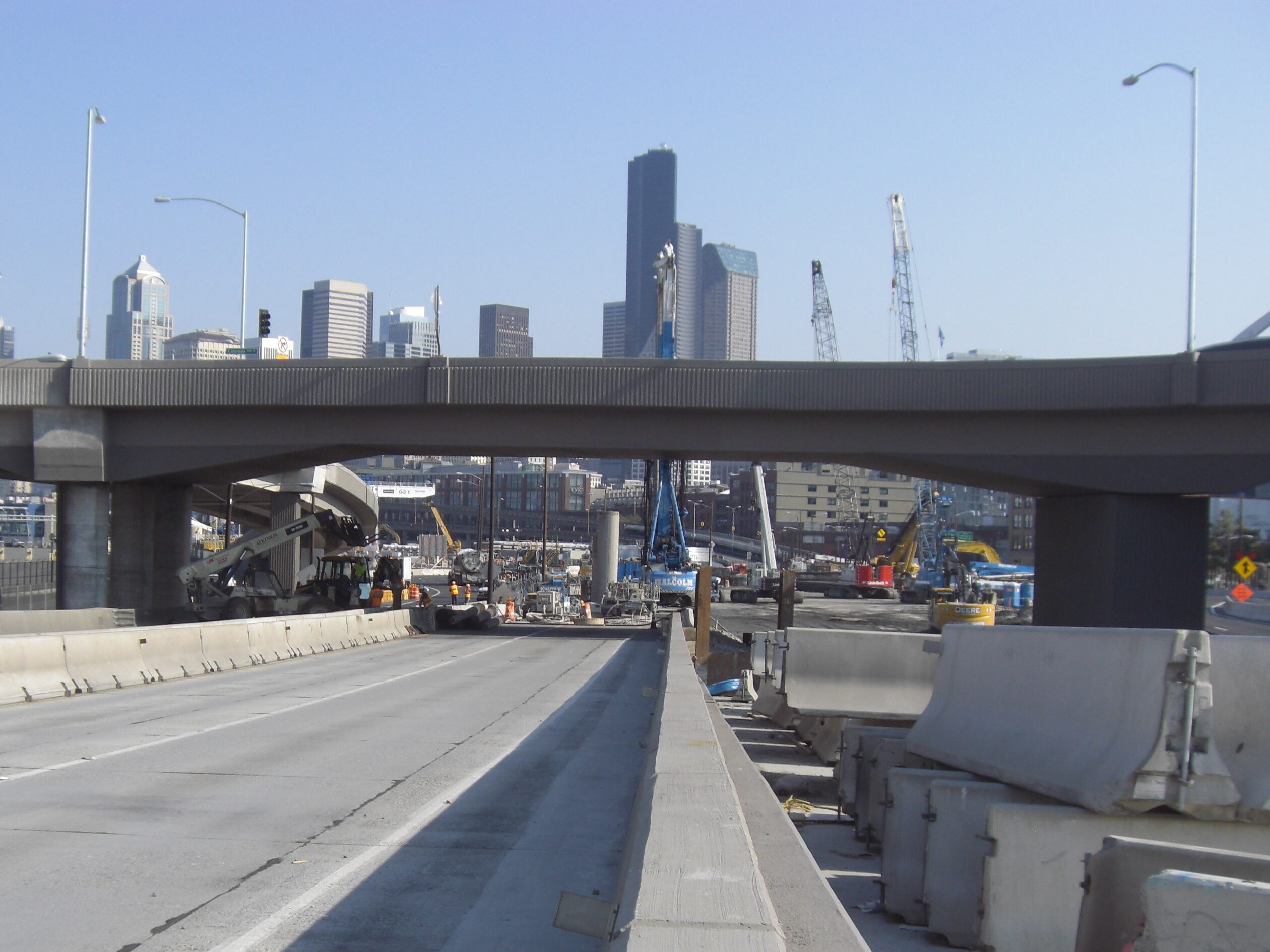
I also developed procedures to assist detailing staff with the creation of complicated framing plans. The same procedures were used to correctly develop the longitudinal sections showing the center of post-tensioning force, something I would later use on Rockingham.
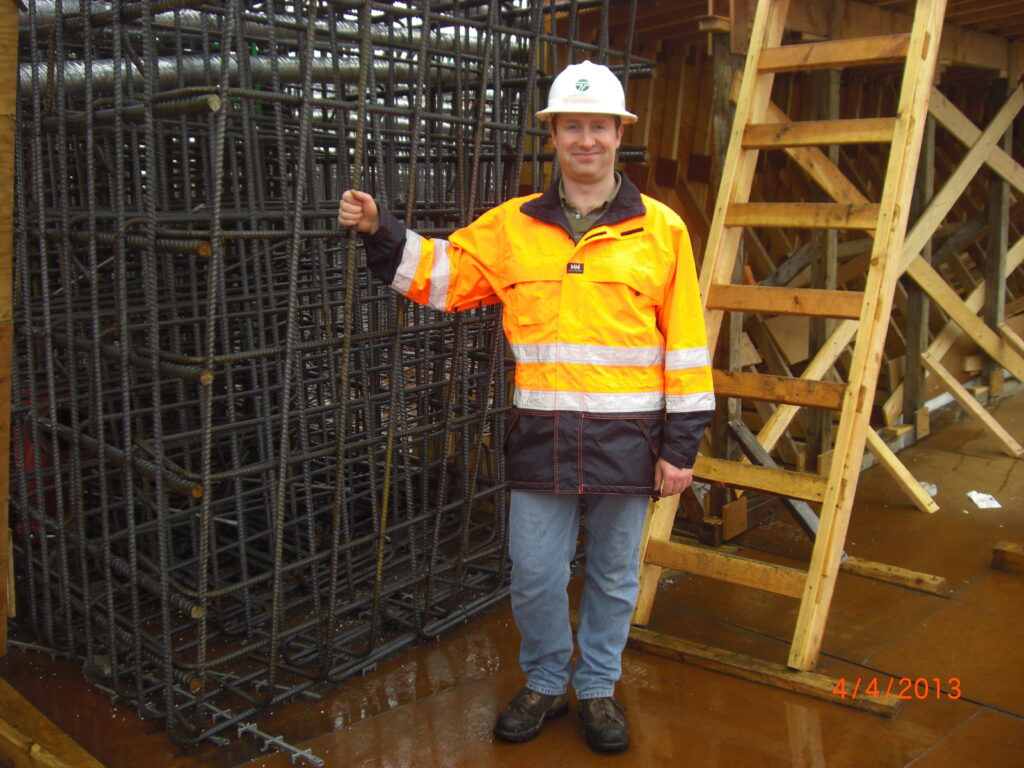
The Atlantic Street Bypass, as it was known officially, was opened to traffic in 2014. The design team affectionately calls it the Little-H to this day because from the air it looks like a lower case letter ‘h.’
The year 2021 has been a great one for The Bridge Guy. Wishing everyone a Merry Christmas and we’ll be back around New Years with more unique insights into the world of bridge engineering.
Views: 624